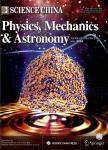Shape phase transitions in nuclei:Effective order parameters and trajectories
Shape phase transitions in nuclei:Effective order parameters and trajectories作者机构:Liaoning Normal University Department of Physics Dalian China (GRID:grid.440818.1) Peking University Department of Physics and the State Key Laboratory of Nuclear Physics and Technology Beijing China (GRID:grid.11135.37) (ISNI:***) Peking University Department of Physics and the State Key Laboratory of Nuclear Physics and Technology Beijing China (GRID:grid.11135.37) (ISNI:***) Peking University Department of Physics and the State Key Laboratory of Nuclear Physics and Technology Beijing China (GRID:grid.11135.37) (ISNI:***) National Laboratory of Heavy Ion Accelerator Center of Theoretical Nuclear Physics Lanzhou China (GRID:grid.450259.f) (ISNI:0000 0004 1804 2516)
出 版 物:《Science China(Physics,Mechanics & Astronomy)》 (中国科学:物理学、力学、天文学(英文版))
年 卷 期:2011年第54卷第S1期
页 面:88-97页
核心收录:
学科分类:07[理学] 0805[工学-材料科学与工程(可授工学、理学学位)] 0704[理学-天文学] 070202[理学-粒子物理与原子核物理] 0702[理学-物理学]
基 金:supported by the National Natural Science Foundation of China (Grant Nos. 10425521, 10935001, 11005056 and 11075052) the Major State Basic Research Development Program (Grant No.G2007CB815000)
主 题:nuclear shape phase transition interacting boson model effective order parameter finite particle number effect transition trajectory
摘 要:We analyze systematically the effective order parameters in nuclear shape phase transition both in experiments and in the interacting boson model. We find that energy ratios and B(E2) ratios can distinguish the first from the second-order phase transition in theory above a certain boson number N (about 50), but in experiments, only those quantities, such as E(L1+)/E(02+) and B(E2; (L+2)1 → L1)/B(E2; 21 → 01), etc., of which the monotonous transitional behavior in the second-order phase transition is broken in the first order phase transition independent of N, are qualified as the effective order parameters. By implementing the originally proposed effective order parameters and the new ones, we find that the isotones with neutron number Nn = 62 are a trajectory of the second order phase transition. In addition, we predict that the transitional behavior of isomer shifts of Xe, Ba isotopes and Nn = 62 isotones is approximately monotonous due to the finiteness of nuclear system.



